The new Apple AirPods were released early last year, when the world was expecting Apple to bring out a totally new version of its true wireless earbuds that, supposedly, would be waterproof and noise-cancelling.
Jump to
Instead, Apple simply updated its original true wireless earbuds, this time with an H1 chip and wireless charging, and the AirPods (2019) were born.
While this may have felt like a disappointment for some, the inclusion of a new H1 chip improves connectivity and battery life, and allows you to summon Siri with your voice alone – meanwhile, an optional wireless charging case means you can use a Qi-compatible charging mat to power the case, rather than sticking a cable into the Lightning charging port in the bottom of the case.
So, do the second-generation AirPods improve upon their predecessors – and are they still worth buying now that the noise-cancelling AirPods Pro have come on the scene?
Apple AirPods upgrade
The 2019 AirPods are getting a firmware upgrade that should make it easier for you to switch between different devices while listening.
A new auto-switching feature means that the AirPods can now "magically switch over between devices", detecting automatically which device you are using.
For example, if you've just finished listening to a podcast on your phone, you can pick up your iPad to watch a TV shows and the AirPods will connect to the tablet automatically. It's a nifty feature, and yet another way AirPods are tailor-made for the Apple ecosystem.
The firmware upgrade is coming with iOS 14 – the beta is out now, but you'll have to wait until September until the full version is expected to be released with the iPhone 12.
The noise-cancelling AirPods Pro are also getting an upgrade with iOS 14, which will allow for Dolby Atmos spatial audio.
The new feature will work in 5.1, 7.1, and Dolby Atmos, which positions sound all around you within a virtual sphere – that means that if you're watching a Dolby Atmos film that shows a plane flying overheard, it will sound as though the plane is really passing above you.
As well as allowing for clever virtual Dolby Atmos, the AirPods Pro will also be able to tracks the motion of your head and your device, to ensure that the audio always appear to originate from the correct position.
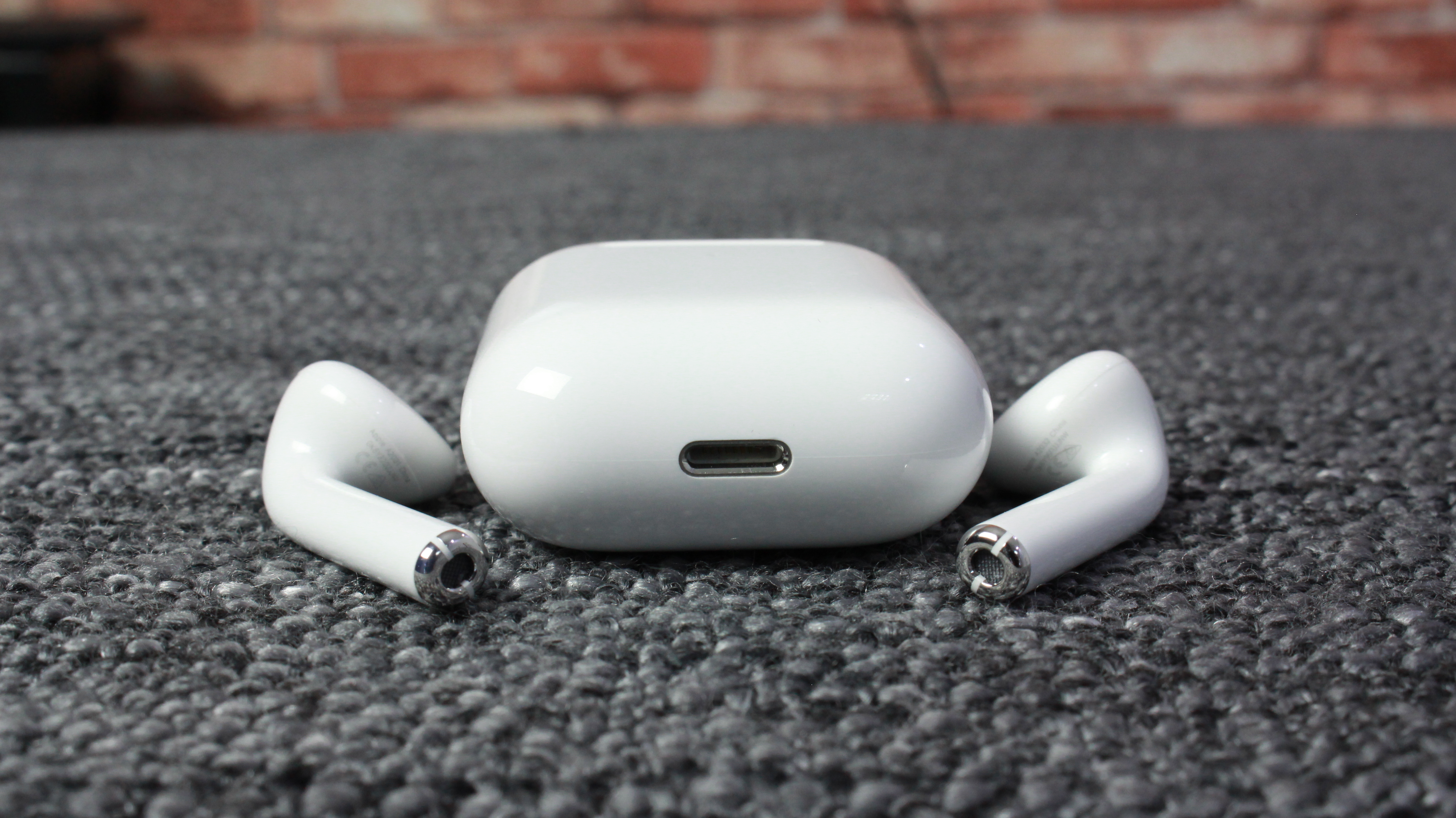
Price and availability
The second generation of the Apple AirPods cost $159 / £159 / AU$249 with the standard charging case, and $199 / £199 / AU$319 with the new Wireless Charging Case bundled in.
The AirPods with the standard case are the same price as their predecessors, but you’ll need to shell out an extra $40 / £40 / AU$70 to get the benefits of wireless charging.
You can also purchase the charging case separately for $79 / £79 / AU$129, which is good news if you have the original AirPods but want to upgrade your case to one that supports wireless charging, although you might feel it’s a high price to pay for some added convenience.
Significant Apple AirPod deals are rare, but not impossible to find – the cheapest you're likely to find the standard charging case model is around $125 / £130.
Looking for something cheaper? You can get the Optoma NuForce BE Free5, which are among our favorite true wireless headphones, for $100 (about £75 / AU$130).
If you can afford to splash your cash, it's well worth checking out the Sony WF-1000XM3 Wireless Earbuds; they cost £220 / $230 / AU$400, but they've topped our list of the best true wireless earphones.
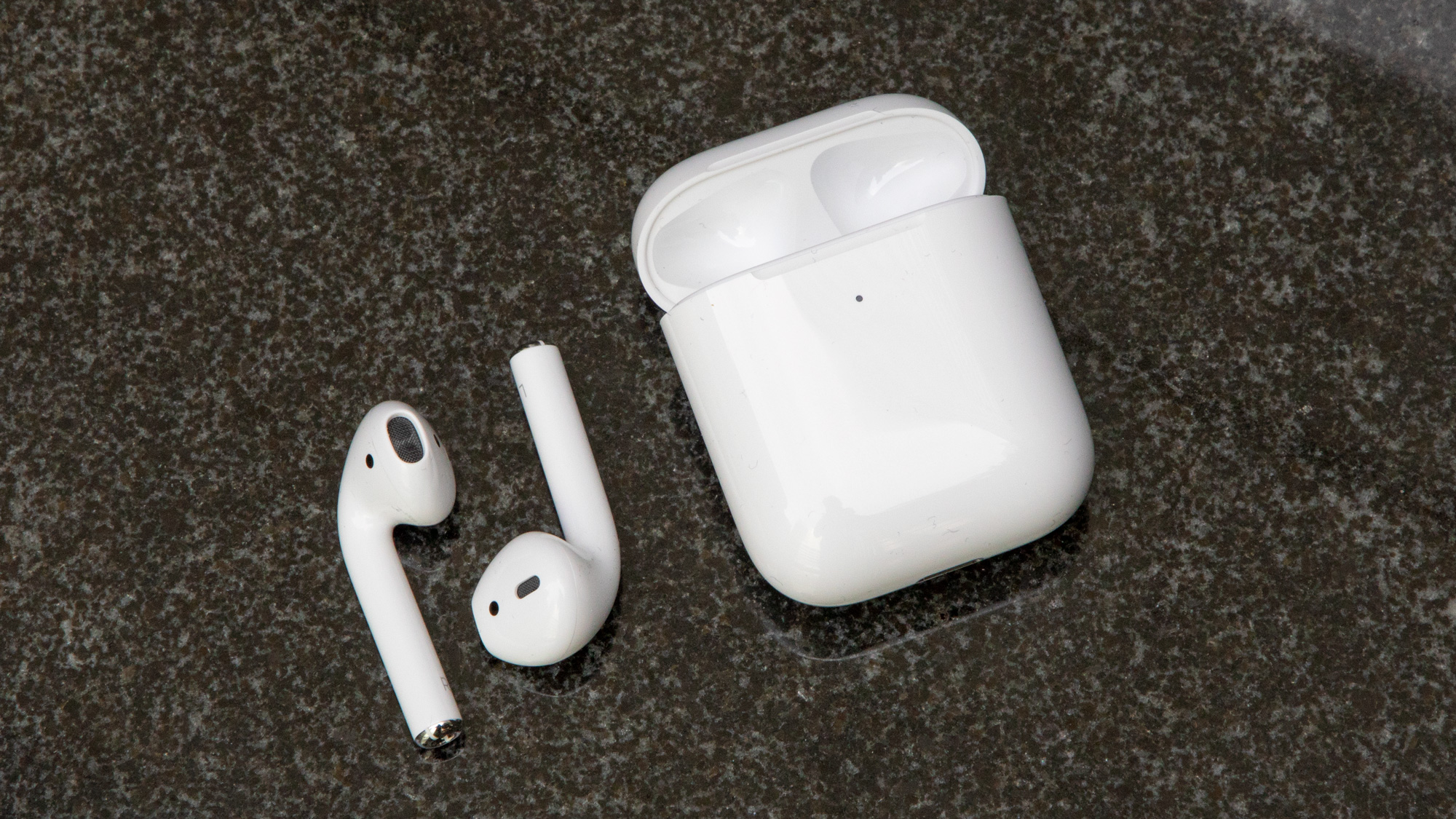
Design
Design-wise, there’s not a huge amount of difference between the second-generation AirPods and the originals; the long earbud stems and pillbox-style charging case look pretty much identical, although the new charging case now features a small LED light on the front, which allows you to check the charge status of the buds – it glows green if they’re fully charged, and orange if they’re not.
The charging case offers a further 20 hours of battery life on top of the five hours you get from the buds themselves, which is the same as the original AirPods; Apple also says the second-generation model offers “3 hours of talk-time from a single charge”, up from the two hours provided by the originals. This is thanks to Apple’s proprietary H1 chip, which is built into the new AirPods – more on that later.
We found charging the case was really quick – we went from 25% to 100% battery in around an hour – and we also found the stated battery life for the earbuds themselves to be accurate.
The new wireless charging case means you can use Qi-compatible charging mats to power the case without the annoyance of cables, which is convenient if you already have a wireless charging mat – and as mentioned, if you have the original AirPods, you can buy the case separately.
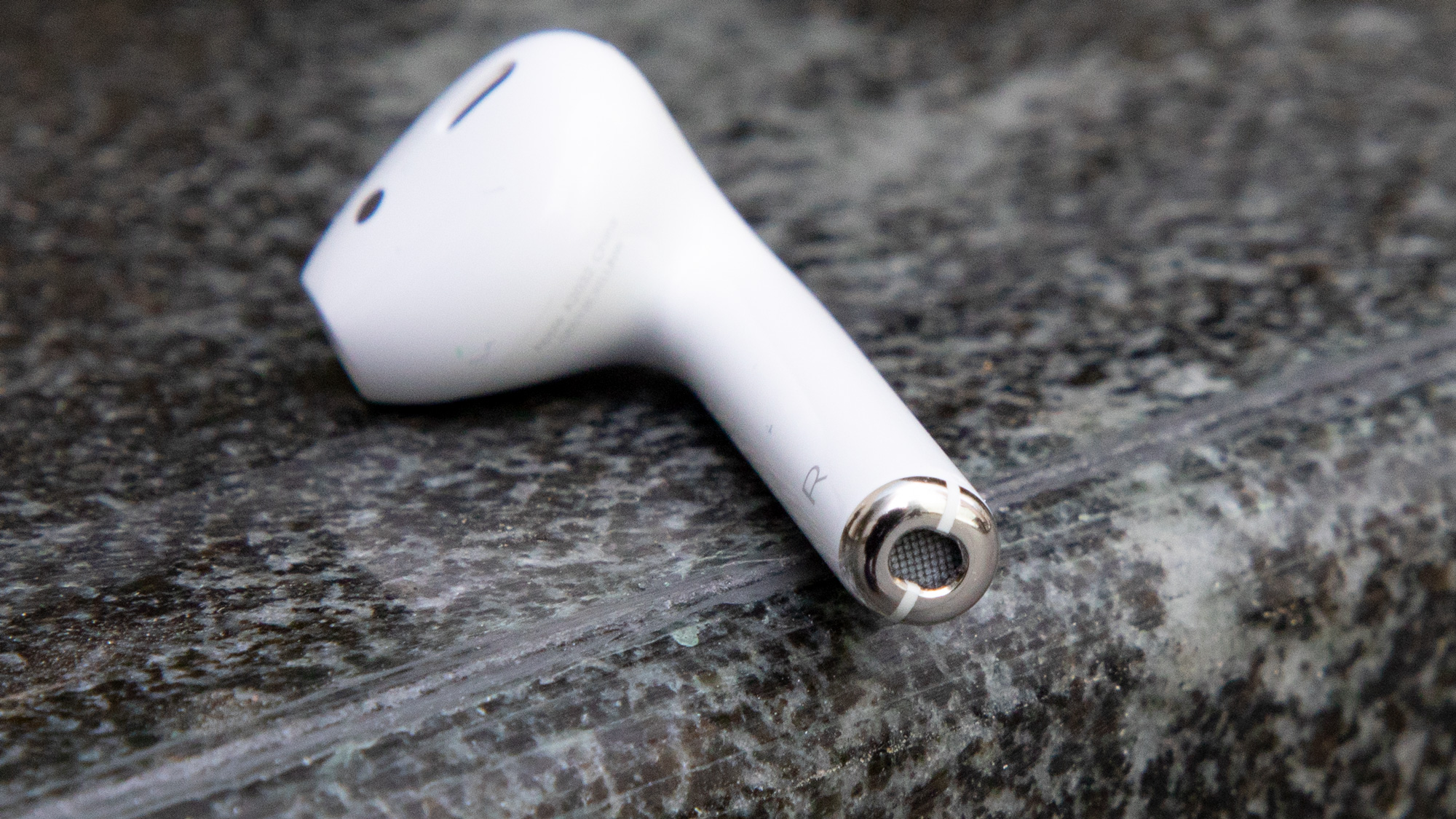
It’s interesting that Apple hasn’t changed the design of the earbuds themselves; after all, those stem-like protrusions were widely mocked upon their original release in 2016, and they don't do the headphones any favors today.
After all, other true wireless earbuds that arguably look more stylish have been released since then, like the B&O Beoplay E8 Wireless Earphones, and the new Samsung Galaxy Buds.
Another criticism of the first-generation AirPods was the lack of adjustable silicone ear tips that would allow you to find the best fit for your ears... and it’s the same story with the new AirPods.
Despite this, the new AirPods do feel fairly snug and comfortable, although we probably wouldn’t wear them out running for fear of them falling out. As with other Apple products the design of the AirPods has quickly become somewhat iconic, and you could argue that the originals popularized the true-wireless earbud, which is a good enough reason to stick to a tried and tested design.
Saying that, these design woes is have now been addressed with the AirPods Pro, which come with adjustable silicone tips and shorter stems for a more streamlined look.
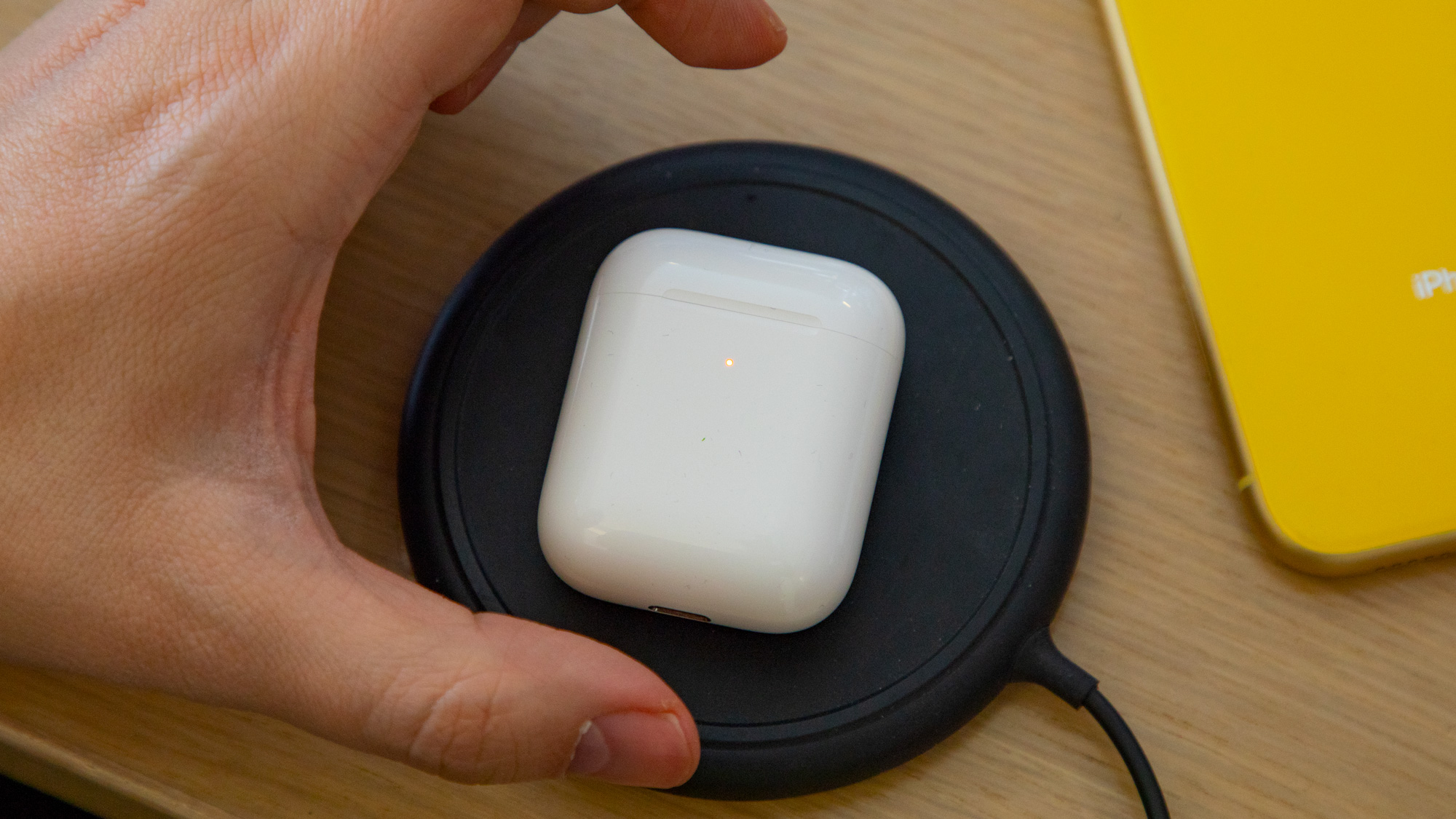
Features and performance
The main calling card of the second-gen AirPods is improved connectivity, thanks to Apple’s H1 headphone chip, which replaces the previous chip, the W1.
Pairing was pretty rapid with the original AirPods, but it’s noticeably quicker with the new AirPods; if you’re using an iPhone, an option to pair the AirPods will appear on your phone screen as soon as you open the charging case, as well as the battery status of the AirPods and the charging case.
The H1 chip also enables the new AirPods to offer hands-free ‘Hey Siri’ functionality. This means you can use the voice assistant command to place calls, change songs and more – basically anything Siri can do, direct from the earbuds, without needing to pull your iPhone out.
We found this feature worked really well, and the built-in microphone was adept at picking up our voice, even in loud environments.
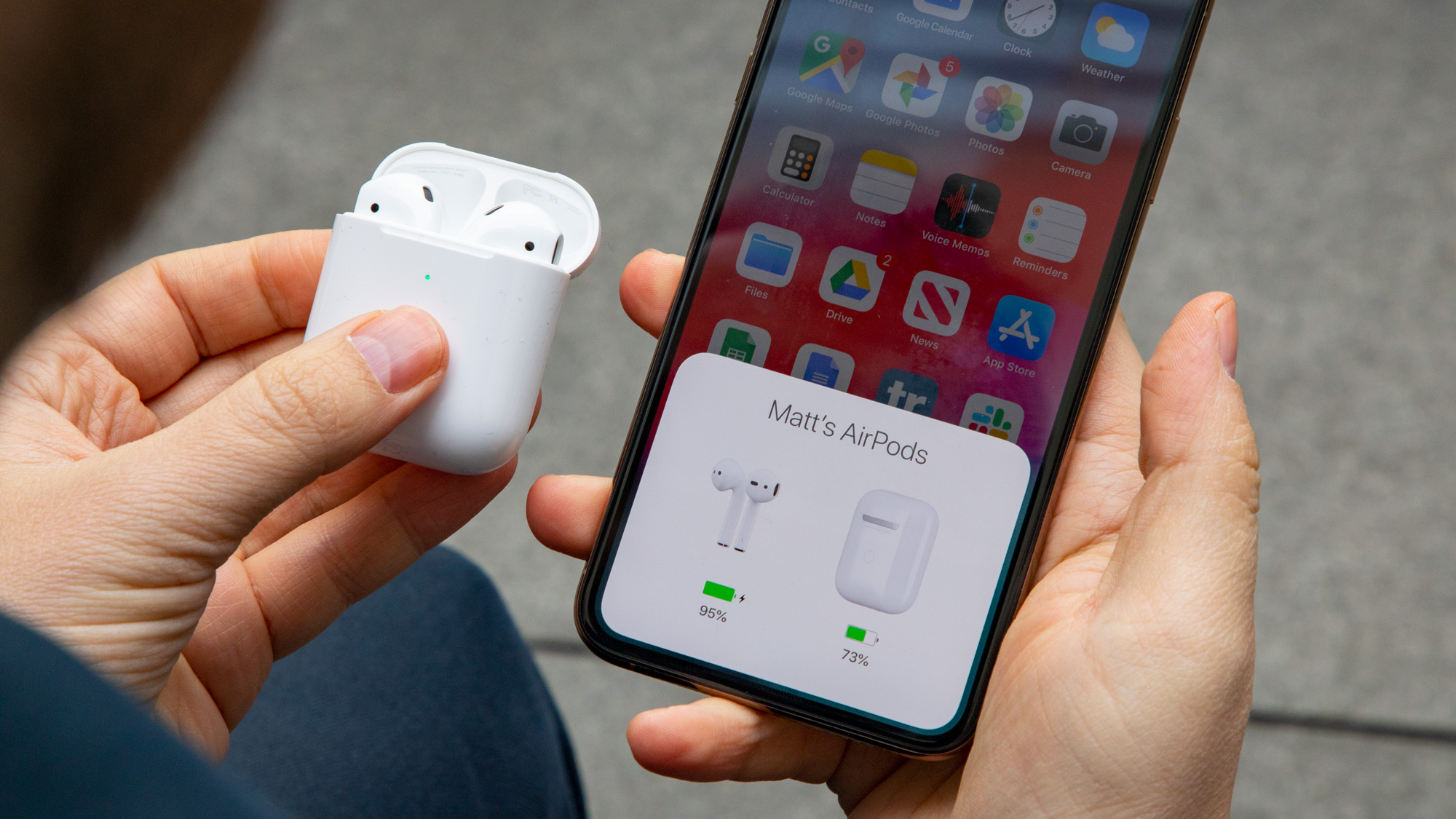
If you prefer, you can set up the new AirPods to summon the voice assistant when you double-tap the outer housing of the earbuds. If you select the AirPods from the Bluetooth menu in your phone’s settings, you can also configure the touch controls to play/pause your music, skip to the next or previous track; you can also turn off touch controls altogether. You can only assign one double-tap control to each earbud, which can be slightly limiting.
While we carried out most of our tests using an iPhone SE, we also tried pairing them with an Android phone, the Huawei Mate 20. While you don’t get the automatic pairing you get with an iPhone, Bluetooth pairing is still pretty quick. You just need to hold down the pairing button on the back of the AirPods case and they should appear in your phone’s Bluetooth menu.
Apple says the H1 chip means the “AirPods deliver up to two times faster switching between active devices”, are “50% faster when transferring a call to your AirPods”, and “deliver 30% lower gaming latency”.
We used the new AirPods while playing iOS games and we didn’t experience any latency issues. We also found using the AirPods to make and answer calls to be a seamless experience, and the quality of the audio was generally very good.
- Apple AirPods (2019) vs Samsung Galaxy Buds: which is best for you?
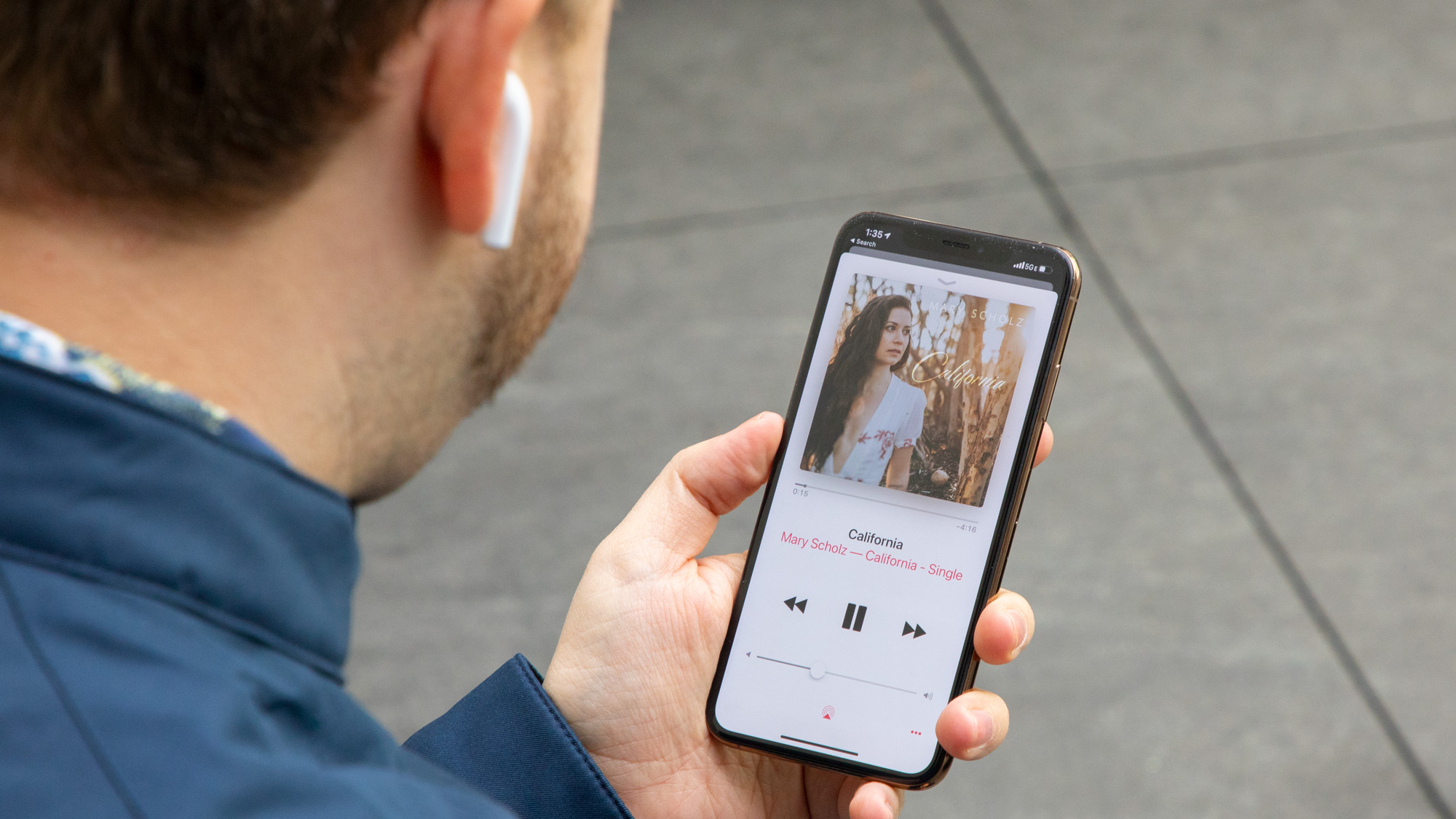
In terms of audio quality, nothing has changed between the original AirPods and the second-generation model. They have a lively, powerful presentation, although they can sound slightly harsh when it comes to higher-frequency sounds, and they aren’t the bassiest earbuds on the market.
We tried them out on Joanna Newsom’s Sawdust and Diamonds, and while we were impressed by the clarity of the vocal, we were slightly underwhelmed by the treatment of the bass, and found that the treble frequencies were sometimes uncomfortably harsh.
We had the same issues listening to Al Green’s Let’s Stay Together; while the mid-frequency vocals sounded smooth and detailed, the higher brass and woodwind accents overpowered the other frequencies.
The AirPods (2019) fared slightly better when it came to Radiohead’s No Surprises. The gently strummed acoustic guitar had a warm, textural sound, while the glockenspiel sweetly accented the percussion with its crystalline presentation. Again, the vocals sounded good overall, with a smooth, clear tone; however, the new AirPods didn’t quite manage to convey the rich bass timbres.
So, like the original AirPods, the new Apple AirPods sound great when it comes to mid-frequency vocals, guitar and keys, but they can sound rather lackluster when it comes to bassier frequencies, and you may experience slight harshness with percussive, high-frequency sound.
There's no noise cancelation on offer here; for that, you'll need to take a look at the AirPods Pro, or the fantastic Sony WF-1000XM3 Wireless Earbuds.
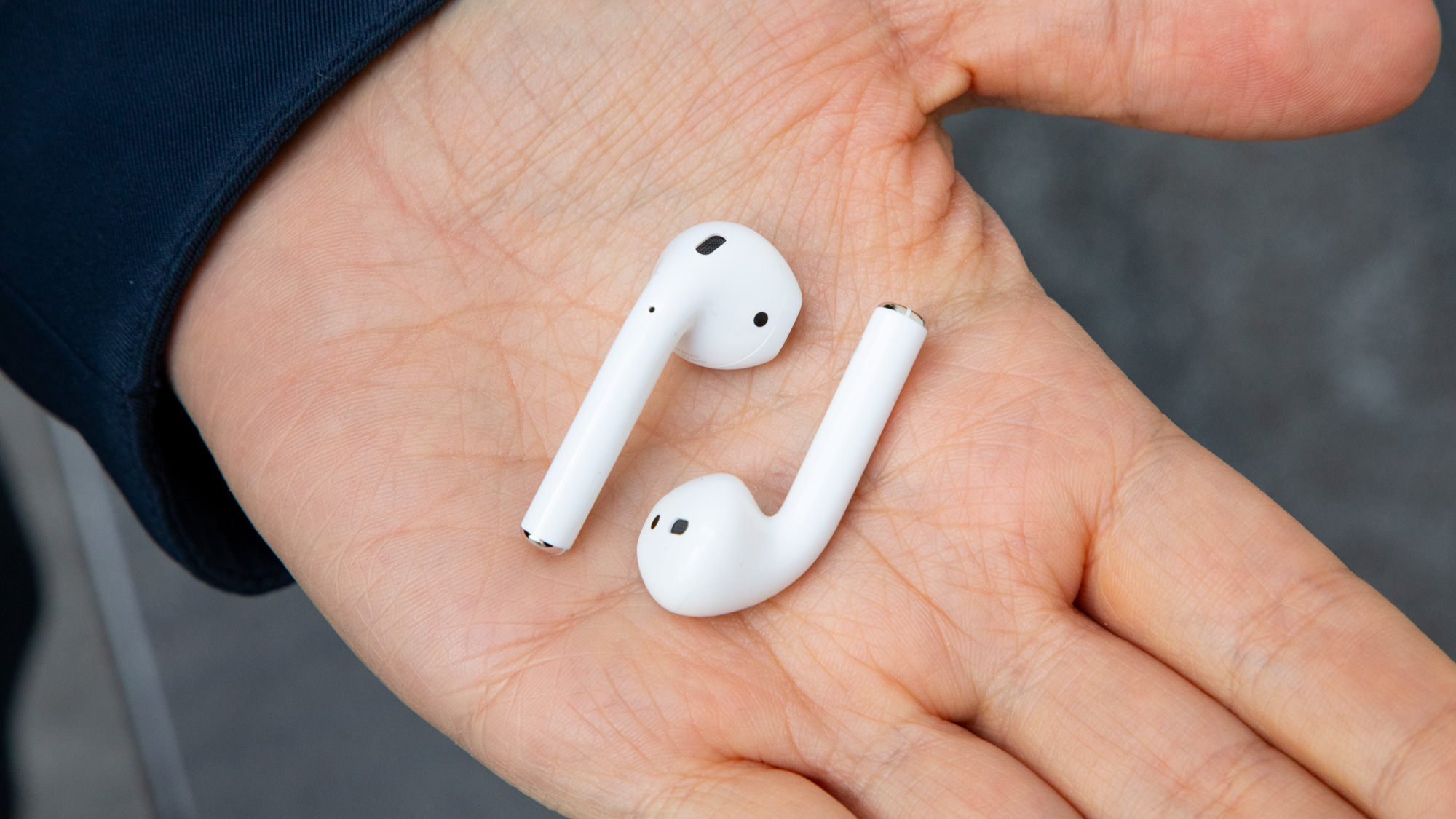
- Here's our round-up of the best AirPod prices, sales and deals this month
Final verdict
Aside from the wireless charging case (which costs extra), the new AirPods don’t seem to be a huge improvement on their predecessors. Sure, pairing is quicker and wireless charging can be useful, but it doesn’t feel like Apple has addressed any of the issues the original AirPods had, notably, the sound quality and design.
Buying the AirPods with the new wireless charging case also makes them more expensive than many of their competitors, including the Samsung Galaxy Buds which include a wireless charging case at no extra cost.
Still, if your old AirPods have seen better days, or you’re looking to buy your first pair of true wireless earbuds, it’s worth buying the AirPods (2019) particularly if you already use an iPhone to play music – just don’t spend money upgrading your old AirPods if they’re still in good working order.
In fact, if you're looking for a real upgrade, you'd be better off buying the AirPods Pro – although they're considerably more expensive, they represent a real step up from the original AirPods, with noise-cancelling smarts and better sound.
- Not convinced? Hunt for AirPods-alternatives in our round up of the best true wireless earbuds around
from TechRadar - All the latest technology news https://ift.tt/2I6MM2f
via IFTTT
0 التعليقات: